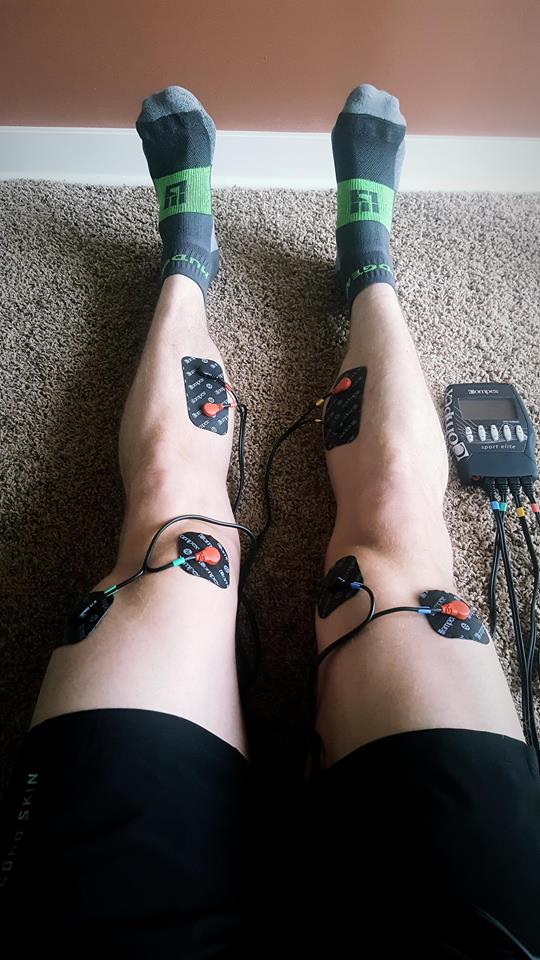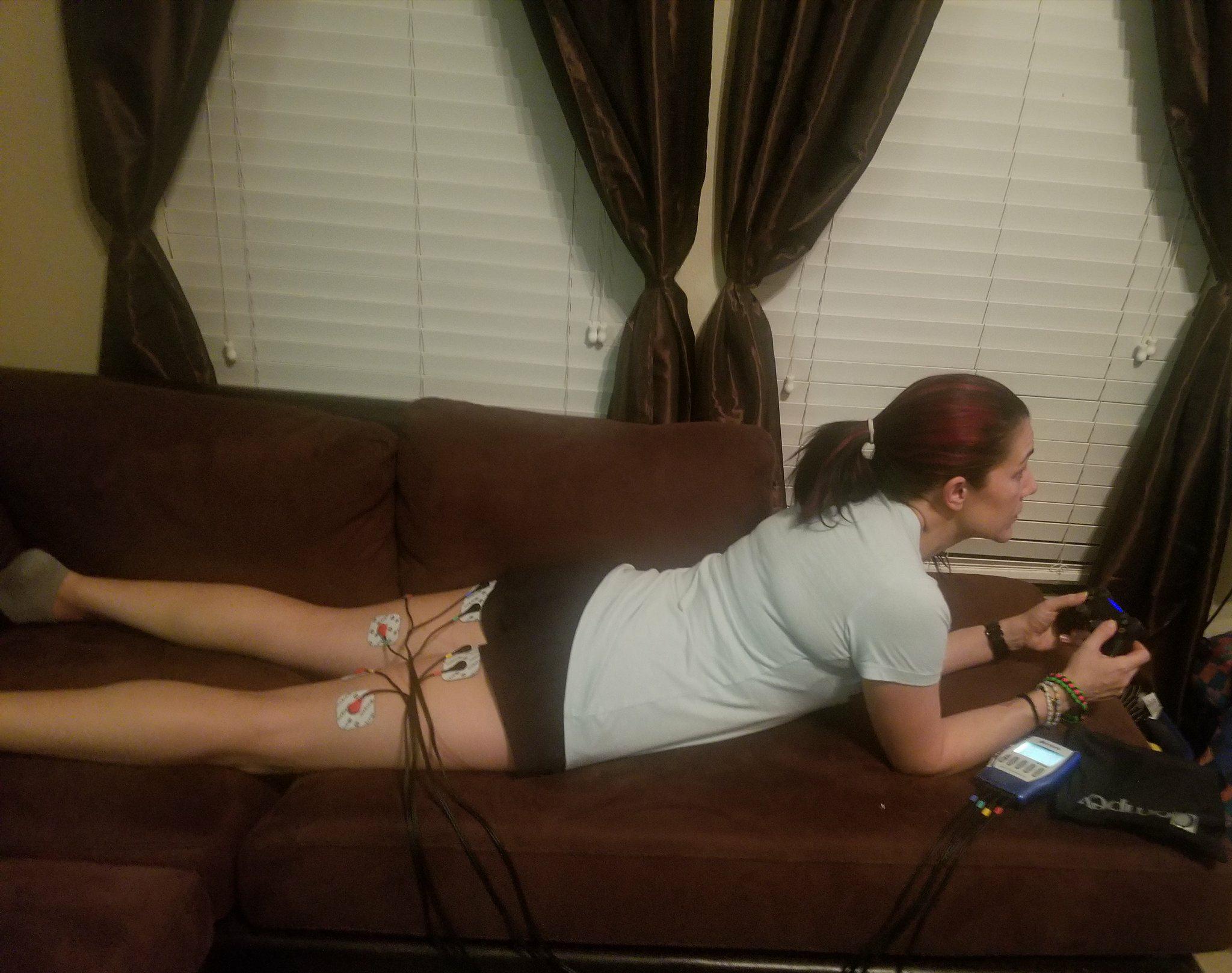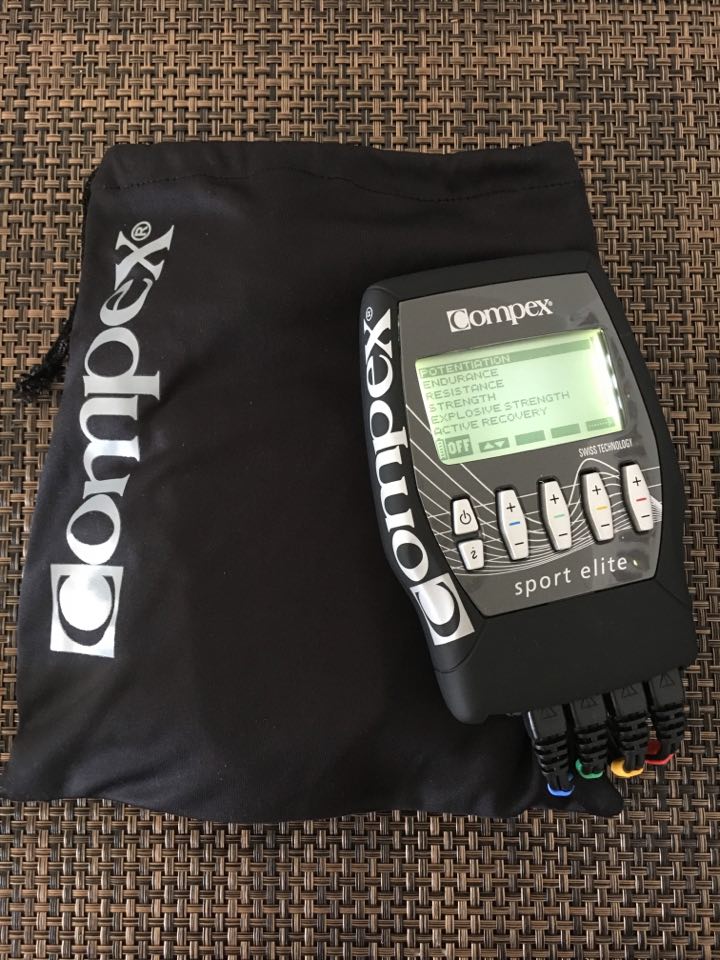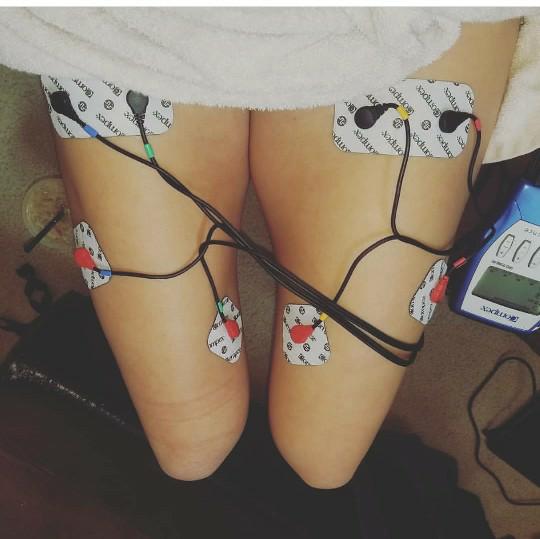There is a saying that I like when it comes to fitness, “if you want something you never had, you have to be willing to do something you have never done.” Normally this comes in the form of more training, harder training or a better diet. The question is if you already feel like you are putting in extra effort in those categories, what else can you do? The answer may be Compex Electrical Muscle Stimulators (EMS). I got to test several models out and here are some thoughts on their product and some info to determine if it is right for you.
What is it?
An EMS device is basically a series of electrodes that hook to the targeted muscle (aka muscle you want to improve). The device then sends electrical currents through your muscles making them forcibly contract. The device comes with several settings; endurance, recovery, and resistance are included on all models with Edge as the base model. Pre-Warm up and strength are added to the Performance model. The next model up, Elite, includes explosive strength and potentiation. Finally, Wireless is the Elite model with the comfort of no wires.
You may have seen similar electrode type products in stores for cheaper but those are TENS units that are focused on pain relief by stimulating the nerves. EMS stimulates the muscle for muscular improvement and recovery thus giving you different results from a store-bought TENS device. As of 2017, they added Transcutaneous Electrical Nerve Stimulation (TENS) to all models making them two products for the price of one.
Ease of use:
While the initial unboxing may seem overwhelming, they really make it simple to use. Everything is color coded and the cords can only plug into the machine in one direction. Handy quick user reference guides make the pads easy to place. Although I personally use it solely on my legs, Compex provides instruction for attachment to every major muscle group on your body including (of importance to OCR athletes) forearms, back, and arms. The pads are sticky and reusable lasting for months even with regular use. Setting it up takes about as long as it would to get dressed and get ready to go for a run.
Does it work and can I just use this instead of working out?
Some of you may be thinking, “Great! I can just hook this up to my legs, never run again and still crush it at Obstacle Course Races (OCRs).” Unfortunately, no you can’t. Compex is a great supplementary tool for improvement but it won’t replace running. While it will make your legs stronger and build endurance with continued use, it doesn’t improve the other parts of your physiology necessary for running including your cardiovascular ability (i.e. the ability for lungs to extract oxygen from the blood, stroke volume of the heart, neurological efficiency of running movement, etc.) Just like other building blocks of fitness, this is just a tool in your kit bag for improvement.
The machine will give you a workout. If you think you can just throw it on and relax you might be surprised to find out how intense it is if you do the strength or endurance programs. The repeated muscle contractions are tiring and it will give you a similar feeling to having spent the equivalent time in the gym.
“I’ve been using mine on recovery setting after every long run and have NEVER been sore after a run! It has to be the Compex because it’s the only thing I changed and this is the best I have ever felt when training for a marathon.”
–Randi Lackey, record for most number of Conquer The Gauntlet wins

Conquer The Gauntlet Pro Jeff Yanda using Compex in his MudGear low cut socks.
Favorite Aspects:
Several things make the Compex stand above the competition for recovery and training including price and portability. The price is not bad compared to other high tech recovery products which can cost over $1000. The base model, The Edge, starts at $275 (they’ve recently been doing major sales that drop the price to $150) and the models get more expensive all the way to the Wireless model which is $1099 (or $725 on sale). If you are already spending lots of money on yearly season passes, hotels and travel, maybe take one less trip this year and put that money towards a product that is going to give you better results.
One of the best parts about it is how small it is. I have used other high tech recovery products that literally take up half of my suitcase. The complete Compex system takes up as much room as a long sleeve running top when all the packaging is removed. Since I travel a lot for work, the Compex goes with me everywhere.

Death Race finisher Christina “HB” Armstrong using her Compex focusing on hamstring endurance while playing video games.
Least Favorite Aspects:
The only thing I’m not crazy about is once you are all hooked up and ready to go there are literally wires hanging around everywhere. It takes some getting used to as you figure out where is the best place to use it and how to lay the wires down. However, they solved this issue with their Wireless product, I just haven’t had the pleasure of using that version.
I have had issues before with the pads causing discomfort but that is simply pad placement. After pausing the system and turning it back on with pad placement adjusted, the discomfort when away.
Overall:
Overall I give the Compex 4.5/5 stars. You won’t find a high-end product that does as much as it does (strength, endurance, recovery) for the price and for the portability. The machine is easy to use and provides excellent quick start reference guides. Their multiple models allow you to choose your focus without paying for extra features.
For example, if you are doing Toughest Mudders you can go with the Edge or better model. If you are doing something with harder obstacles like Conquer The Gauntlet, Savage Race or OCR World Championships I would go with the Performance model for strengthening your upper body. If you are doing Tough Mudder X or enjoy Crossfit training you would want the Elite model due to its Explosive Strength setting.
Finally, if you have money to spend the Wireless is definitely the luxury model but is worth it if you want to be wire free. Compex is a great tool to take your training to the next level for those looking to reach greater heights in 2018.
Latest models/prices and sales can be found at www.CompexUSA.com




Is there clinical data support for using this to actually strengthen muscles as part of training? If so, to what degree would such a device replace conventional weight resistance training? TENS I agree with and use quite a bit for recovery.